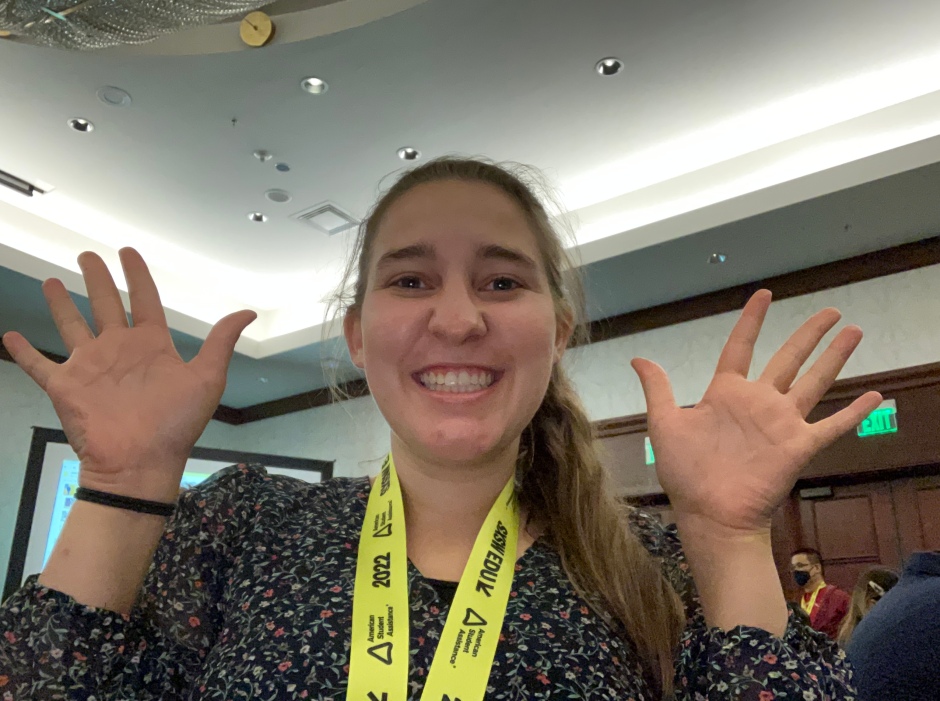As I explored ideas posted on the OpenIDEO platform about re-imagining learning during COVID-19, I noticed that there was a lack of student voice in the conversation, and yet students are the primary users of our education system. As a student myself, I’m very aware that at this time of year, when everyone is finishing up final exams and getting ready for relaxing in summer, most students aren’t keen to go on a site like OpenIDEO to continue discussing school right after they finished the year.
So I thought I would lower the entry barrier into this conversation by texting a bunch of my friends (7th graders-college juniors) 3 simple questions to get an idea about their opinions of online learning. I also set up a Zoom chat for those that wanted to go more in-depth on the conversation where we did a more personalized interview and also a brainstorming session in response to OpenIDEO’s three areas of remote learning, equity, and community. Then I analyzed all the responses, found some themes, and now wanted to share on the behalf of those 23 students who contributed.
Research Questions
The three questions I asked these learners to respond to are as followed:
1. What’s your biggest frustration/what’s driving you crazy about online learning?
2. What’s your favorite part?
3. It would be better if…
Trends
The three greatest trends were students being:
1. Frustrated by their own lack of work ethic/motivation/focus
2. Enjoying the flexibility in terms of space and time offered by online education.
3 Wishing assignments and syllabi, in general, were more greatly altered to better match an online learning environment.
Analysis
As we analyze these trends a bit more carefully, it makes me think of these “How might we” statements for looking towards the future of education:
HMW internally motivate students to show up and participate in school? Teachers currently have less power dominance over students when not physically interacting; typical modes of enforcing attendance and participation such as threats of detention, silent lunch, suspension, etc aren’t feasible in an online environment. Now that these threats don’t exist, students are finding themselves less motivated which leads me to believe that the school work itself and the prospect of learning alone are not intrinsically motivating students. Wouldn’t it be great if students actually wanted to come to school and enjoyed participating in school work? The way to encourage life-long learning is to foster intrinsic motivation to learn – that would be a pretty novel purpose for school if you ask me.
HMW provide flexible learning opportunities post-pandemic? The mid-semester shift to a different learning environment on top of all of the other social-emotional priorities that have arisen due to the pandemic has been predominately challenging; however, the unquestionable best part has been the flexibility it has allowed students with regards to their education. Students have loved being able to wake up late and feel fully rested, knock out classwork while cozy in their beds, and then “get on with the rest of my day doing all the other things I want to do.” The ability to plan personalized schedules and work in a setting of choice has been amazing for so many learners, so now that we’ve seen how much students love this flexibility, how might we continue to provide it upon returning to our schools?
HMW effectively use technology in the classroom? The design for assignments to be better adjusted to an online structure was noted as a frustration, a positive element, and a wishful opportunity. So students loved the teachers that were adaptable and used going online as a way to incorporate new elements to their class in meaningful ways, and they were bored and/or frustrated with those who did not. The difficulties some teachers have had with adjusting to a new technological mode of communication raises an important question about how we can more effectively incorporate technology into our schooling even post-pandemic. What students warn us of though, is that technology can’t just be incorporated just for the sake of saying “I used technology!” It must be incorporated intentionally and meaningfully – there must be a true purpose for why the technology is further enhancing the learning experience.
Beyond the Main Trends
In addition to the primary trends, I found three key sub-trends that emerge when looking at how some of the trends interact with each other.
1. Re-thinking assessment (Responses on test cheating, not wanting tests, wanting more collaboration, and more project work.)
2. Maintain a sense of community (Want more socialization, interaction, and meaningful conversations with peers and teachers.)
3. Use a whole-child approach to education (Frustration with expectations not changing, eyes hurting from so much screen time, new challenges such as moving and schooling with family.)
Read More
If you want to read student’s full responses as well as my more in-depth analysis of the sub-trends, I have added two additional documents as attachments on my OpenIDEO post.



















